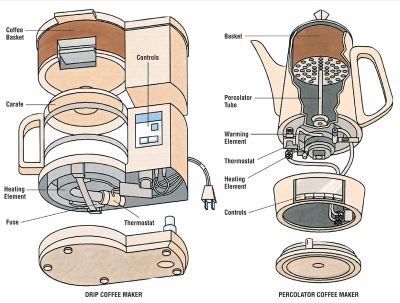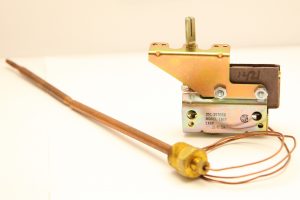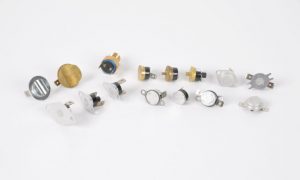Testing your coffee maker to see if the high limit has been reached could not be easier. All you need to do is unplug the unit from the incoming power, remove the wires from the thermostat and then run a continuity test across the terminals on the high limit. If you notice that you do not get a light, that indicates that the circuit is open which indicates that the high limit has been set off. Most coffee makers have a one-shot snap disc thermostat and once the high limit is hit it will need to be replaced. However, with a higher priced unit you might have a snap disc thermostat that is a manual reset, just push the reset button and your back to your coffee.
Adjustable and Fixed Temperature Switches
Most coffee makers have two control systems. The first of the control systems can be fixedCapillary Sensor temperatures or adjustable in the larger or higher priced units. This may be part of the hot water temperature setting on your machine. This first type of thermostat is a snap disc in less expensive units or a capillary thermostat, however newer units may be using a digital thermostat as its replacement. The second type of control system is the high limit. This high limit is what prevents the coffee maker from burning up when the pot runs out of liquids, or if the heater decides to go crazy. The high limit control is typically a snap disc thermostat or a thermal fuse. If the temperature becomes too high for the unit to withstand, the snap disc or thermal fuse will open the incoming power control circuit and then everything will shut off.
The heat preservation temperature of the coffee machine needs to be maintained at 79-82 degrees Celsius, so a bimetal thermostat that can not only meet the precise heat preservation requirements of these coffee machines, but also suitable for various installation methods is required. All kinds of safety certifications are required, UL, TUV, VDE, CQC, 125V/250V, 10A/16A specifications, 100,000 action life.
Post time: Feb-24-2023



